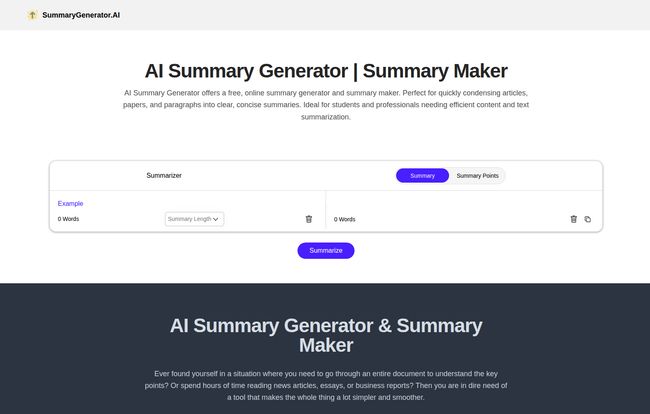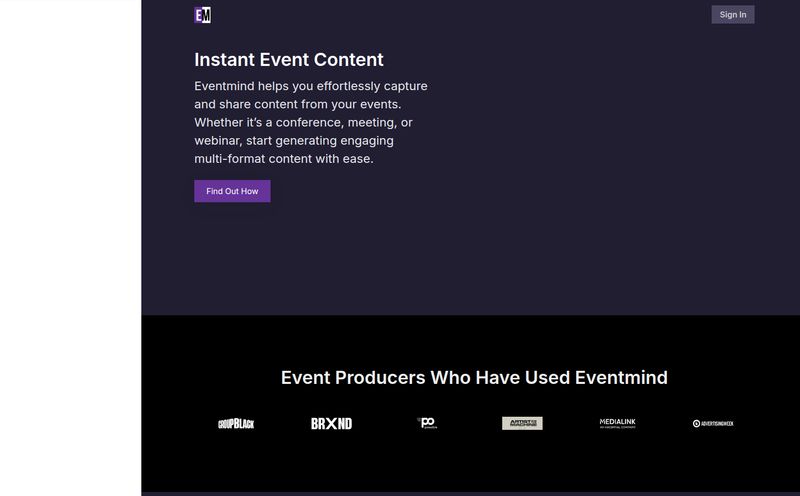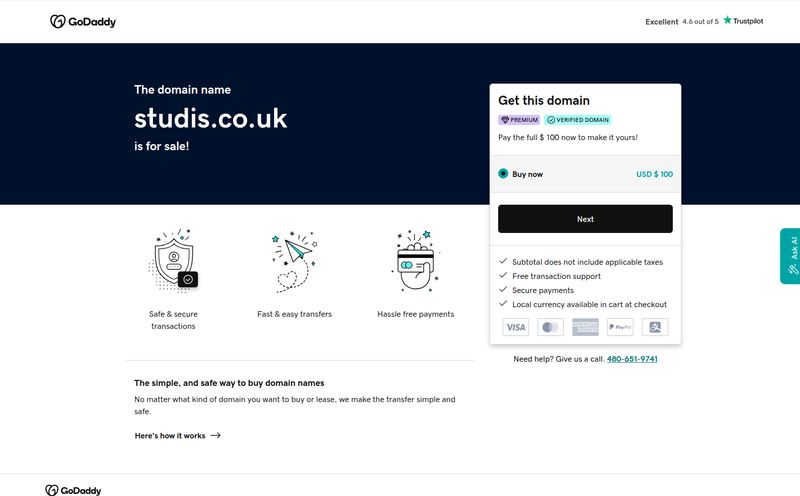As someone who’s been neck-deep in SEO and content for more years than I’d care to admit, my inbox is a battlefield. It's constantly bombarded with pitches for the “next big thing” in AI. AI writers, AI image creators, AI schedulers... you name it, there's an AI for it. Most of them promise to change my life and end up just changing my credit card statement.
So, when I stumbled upon SummaryGenerator.AI, my skepticism was already at a healthy level. Another free AI tool? Sure. Free like a puppy, I bet. But I clicked anyway. Because in this age of information overload, where every article is an epic and every email a novella, the promise of a good, quick summarizer is just too tempting. It’s the digital equivalent of a good pair of noise-canceling headphones.
I was prepared for the usual bait-and-switch. The sign-up form, the “free trial” that requires a credit card, the feature limitations that make the tool basically useless. But... that didn't happen. And that, my friends, is where this story gets interesting.
What Exactly is SummaryGenerator.AI? The 30-Second Pitch
At its core, SummaryGenerator.AI is exactly what it says on the tin: a free, online, AI-powered text summarizer. There are no bells, no whistles, no pop-ups begging you to “upgrade for our premium experience!” It’s a clean, simple webpage with a box. You paste your text in, you click a button, and you get a summary. That's it.
It’s built for speed and simplicity. You're not downloading software or worrying about updates. It lives in your browser, ready to go whenever you are. And the most beautiful part? It's genuinely free. I looked for the catch. I scoured the page for a hidden pricing link (which, by the way, leads to a 404 page – talk about commitment to being free). There isn't one. And honestly, in the current landscape of freemium-everything, that's a breath of fresh air.

Visit SummaryGenerator.AI
Putting it to the Test: My First Impressions
So, I decided to take it for a spin. I grabbed a recent, slightly-too-long article about a Google algorithm update—around 450 words of dense, jargon-filled text. I pasted it into the box and looked at my options.
This is where I found the first clever feature. It’s not just a one-size-fits-all summary. You have choices. Two of them, specifically:
- Summary: This gives you a standard, condensed paragraph. It reads like a well-written abstract.
- Summary Points: This breaks the key information down into bullet points.
You can also choose the length: Short, Medium, or Long. I love this. Sometimes you just need the absolute bare-bones gist, and other times you need a more detailed overview. I clicked “Summary Points,” set the length to “Medium,” and hit the “Summarize” button.
It was fast. Ridiculously fast. Before I could even take a sip of my rapidly-cooling coffee, the summary was there. A neat list of 4-5 bullet points that perfectly captured the core message of the original article. All the fluff was gone, leaving just the actionable insights. Impressive.
The Good, The Bad, and The AI-Generated
No tool is perfect, of course. After playing around with it for a while, summarizing everything from news articles to chunks of my own blog posts, I got a pretty good feel for its strengths and where it stumbles a bit.
What I Really Liked
The biggest pro is the sheer, unadulterated simplicity of it all. The fact that it's free and requires no sign-up is a massive win in my book. I can just bookmark it and use it whenever I need to without jumping through hoops.
But the real star of the show for me is the dual-mode summarization. This is genuinely brilliant. The paragraph-style summary is great for when I need to quickly grasp the narrative of a piece. But the bullet-point mode? That’s the money maker. It’s perfect for creating study notes, pulling key stats from a report, or generating talking points for a meeting. It’s like the difference between getting a full-course meal and a plate of delicious tapas. Both are great, but they serve completely different needs.
The speed and efficiency are also top-notch. It delivers on its promise of saving you time, and in the world of content and marketing, time is the one resource we never have enough of.
A Few Caveats to Keep in Mind
Now for the reality check. The tool is good, but it’s not magic. The most important thing to understand is the classic “Garbage In, Garbage Out” principle. I fed it a terribly written, nonsensical block of text just to see what would happen, and the summary it produced was... well, an equally nonsensical but shorter block of text. This is a common limitation across the AI spectrum, as discussed in a TechTarget article on GIGO. The AI can’t fix a poorly structured or written source; it can only condense what’s there.
The other major constraint is the word count limit. The platform works best with texts between 100 and 500 words. This makes it perfect for summarizing an email, a news story, a product description, or a section of a larger document. However, if you're a student trying to summarize an entire 20-page academic paper, you'll have to do it chunk by chunk. It's not designed for heavy-duty, long-form summarization, and it’s important to have that expectation set from the start.
Who Is This Tool Actually For?
So, who gets the most out of SummaryGenerator.AI? I see a few clear winners.
Students, this is your new best friend for last-minute cram sessions. Pasting in sections of a textbook or an online article to get the key concepts in bullet-point form is an absolute game-changer for creating study guides.
Professionals and marketers, you'll love this for taming your inbox. Got a long-winded email from a client or a dense industry report? Pop it in here to get the highlights in seconds. It's a fantastic way to quickly assess what needs your immediate attention and what can wait.
Content creators and writers (hello!), it's surprisingly useful for our own work. I've started using it to summarize my drafts. It’s a great way to see if my main points are coming across clearly. If the AI’s summary misses my core argument, it’s a good sign that I need to go back and refine my writing.
It’s a tool for the quick hit, the immediate need, the daily grind. It's not trying to compete with robust, paid software like QuillBot or other premium suites. It knows its lane, and it stays in it beautifully.
Frequently Asked Questions
How does SummaryGenerator.AI actually work?
It uses artificial intelligence and natural language processing (NLP) algorithms to analyze the text you provide. The AI identifies the key sentences and concepts and then reconstructs them into a shorter, coherent summary, either as a paragraph or as bullet points based on your selection.
Is it really 100% free to use?
Yes, it is. I was skeptical too, but there are no hidden costs, subscription fees, or sign-up requirements. It appears to be a genuinely free tool for anyone to use.
What kind of text can I summarize?
You can summarize pretty much any kind of text—articles, reports, emails, book chapters, essays, and even your own writing. However, the quality of the summary will be best if the original text is well-written and clear.
Is there a word limit for the input text?
Yes, and this is important. The tool works best with texts that are between 100 and 500 words long. For longer documents, you'll need to summarize them in smaller sections.
How are the 'Summary' and 'Summary Points' modes different?
The 'Summary' mode provides the condensed information in a single, well-structured paragraph. The 'Summary Points' mode extracts the main ideas and presents them as a list of bullet points, which is often better for quick scanning or making notes.
My Final Verdict
So, is SummaryGenerator.AI worth your time? Absolutely. It’s a fantastic, no-frills utility that does exactly what it promises without any fuss. It has earned a permanent spot in my browser's bookmarks bar.
It’s not going to write your thesis for you, and it won’t magically make sense of a badly written article. But for the daily task of cutting through the noise and getting to the point quickly, it’s one of the best free options I’ve come across. It’s a simple, effective, and refreshingly honest tool in a market that's often anything but. Give it a try; you've got nothing to lose but a few hundred words of fluff.



